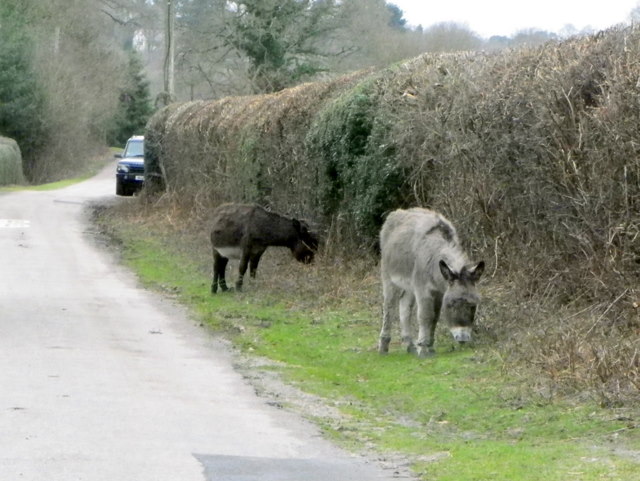Donkeys near Blissford
Introduction
The photograph on this page of Donkeys near Blissford by Maigheach-gheal as part of the Geograph project.
The Geograph project started in 2005 with the aim of publishing, organising and preserving representative images for every square kilometre of Great Britain, Ireland and the Isle of Man.
There are currently over 7.5m images from over 14,400 individuals and you can help contribute to the project by visiting https://www.geograph.org.uk

Image: © Maigheach-gheal Taken: 6 Feb 2011
Grazing beside the minor road from Blissford to Abbots Well and these two donkeys. Donkeys were among the first animals after cats and dogs to associate with man, and were certainly one of the first draught animals used by man when he took up agriculture. Donkeys originally arrived in Britain many centuries ago with the Roman legions. The Romans used them both as pack animals and harnessed four abreast to draw wagons full of supplies. The donkey soon found its place: wherever there was hard work and little reward. Later we can find working donkeys, harnessed and drawing a carriage in Anglo-Saxon paintings, shown pulling a plough in Sussex on the Bayeux Tapestry and more recently there are many pictures of Queen Victoria driving her donkey. At the peak of their popularity there were 100,000 working donkeys in London. Donkeys can be very long lived. Donkeys of 60 years old have been recorded, but normally a 40 year old donkey is looked on as being elderly. You can appreciate why we refer to 'donkey's years' as being a long time (though this may also owe something to the length of donkeys' ears, a play on words!). Of course 'donkey work' is always demanding and arduous. It's not clear where the expression 'talking the hind legs off a donkey' comes from, though!

